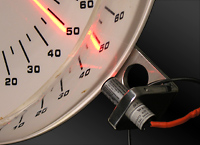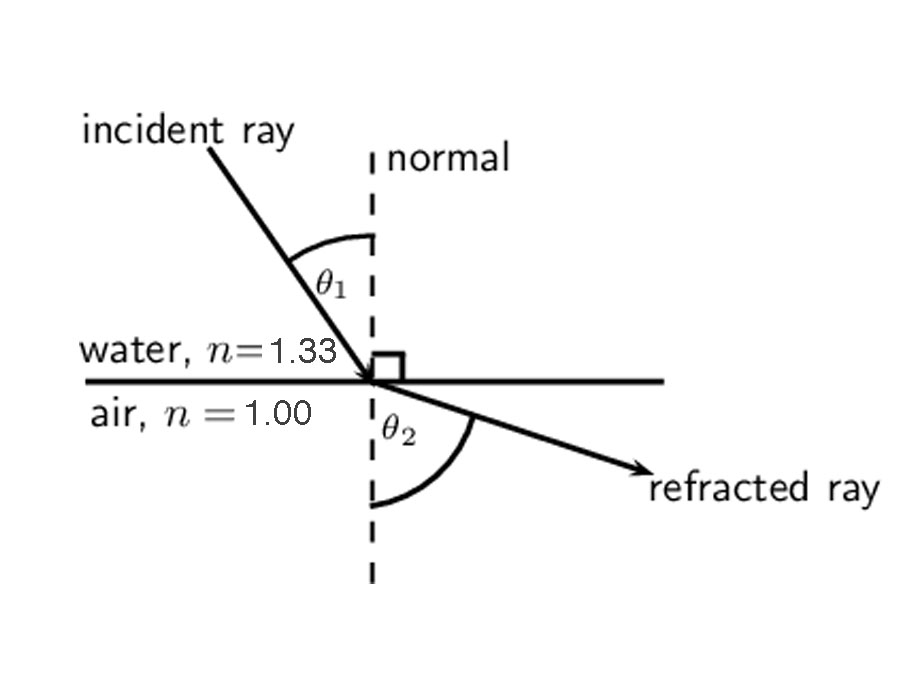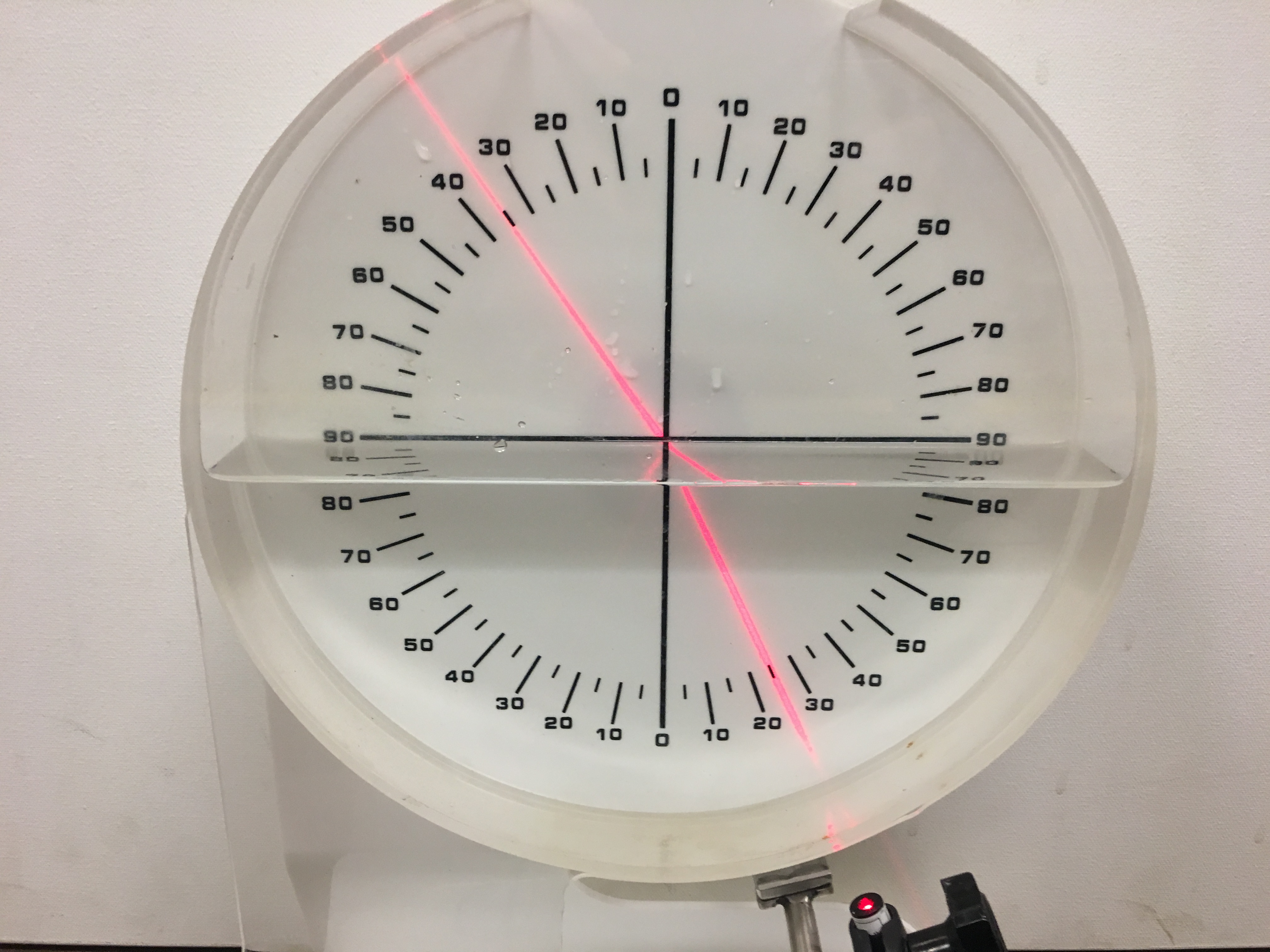Equipment:
- Acrylic reflection/refraction tank
- Laser
- 3V DC power supply

Figure 1
Demo:
This simple apparatus lets students observe angles of reflection, refraction, and complete internal reflection for a light ray that passes through two clear media. The apparatus consists of an acrylic water tank and a pivoting arm with a light source (see picture). The tank is half-filled with water and has a protractor printed on its back side. We modified the original apparatus and built a better arm with a diode laser which produces a bright red line beam (Figure 1). The laser is powered by a 3V DC adapter.
Explanation:
In general, light that is incident upon a boundary will be partially reflected and partially transmitted as a refracted beam. The transition between media at the boundary causes the refracted light to move with a different speed than its initial speed. Refracted light will move in a different direction than the incident beam; it will move either to or away from the normal to the boundary, depending on the indices of refraction for the materials the light is transmitted through. If the light passes from a material with a low index of refraction to a higher one, the light will bend towards the normal, otherwise, it will bend away from the normal.
How much light changes direction is determined by the index of refraction of the material. The index of refraction of a material is defined to be the speed of light in a vacuum, divided by the speed of light in a material (c is the speed of light in vacuum, v is the speed in a material):
n = c/v
From this relationship, it’s easy to see that media through which light travels faster have a lower index of refraction.
There is a relationship between the incident angle of light to the refracted angle; this is known as Snell’s Law. If n1 is the index of refraction of the first material the light passes through (in this case water, n1 = 1.33), n2 the second material’s index of refraction (here n2 = 1.0 for air), and θ1, θ2 for the incident angle and angle of refraction, respectively, we have:
n1/n2 = sinθ2/sinθ1
This relationship is exhibited in Figure 2. Using this, we may then determine the angle the refracted light will make with the new normal.

Figure 2: Ray diagram of refracted light through two different media (image from Siyavula).
For instance, let’s say the laser is moved to a position θ1 = 25°. Then we can rearrange Snell’s Law to say:
θ2 = sin-1(1.33sin(25°))
= 34.2°
Indeed, this is what is seen with the refraction tank, as shown below in Figure 3.

Figure 3: Incident angle and angle of refraction for light traveling through water into air.
Furthermore, the reflection/refraction tank may be used to demonstrate the idea of total internal reflection. In the case of this demonstration, the index of refraction of the first medium is greater than that of the second medium. This means that, as the incident angle is increased, the refracted angle moves away from the normal, approaching a refracted angle of 90°. The incidence angle at which the refracted beam is at a right angle to the normal is known as the critical angle. Once the incident beam moves past this critical angle, the light will no longer be transmitted past the boundary, only reflected back to the initial material.
The critical angle may be found by substituting a θ2 value of 90° into Snell’s Law. In our case, this results in:
n1sinθC = n2sin90°
Solving this results in θC = 48.75°, so any angle greater than this will result in total internal reflection of the laser light. An example of total internal reflection is shown below in Figure 4.

Figure 4: Total internal reflection in a tank consisting of water and air.
Notes:
- Be sure to fill the tank to the halfway mark in order to obtain correct angles.
- Laser may be adjusted to insure that, when the laser is at the bottom of the tank, the beam makes an angle of zero degrees (this in turn insures that we see the appropriate reflection/refraction of light when the laser is moved around the tank).
Written by Madison Harris